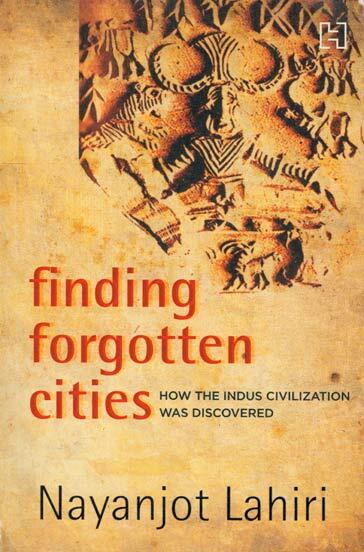How the Indus Civilization Was Discovered
Events leading to the IVC's public recognition as a major episode in Indian history in 1924. Told in an accessible way and based on new research into original documents from the Archaeological Survey of India (ASI) archives by a well-respected scholar.
This book is a pleasure to read, a well-told series of tales that converged in Simla one day in the early 1920's, when a group of archaeologists figured out that an unknown civilization was lurking deep in India's past. It was only when they published their results around the world, however, that the remote age of this civilization became clear.
Occasionally, too much meandering around takes place, but mostly the writer has the tale in hand and brings to light many new facts and interesting themes. For example, Indus archaeology has always had a political dimension to it. After the discovery of Mohenjo-daro, British administrators and Indian nationalists found common ground in exploring a civilization that had pushed Indian history back by two thousand years and suddenly gave it equal stature to ancient Egypt and Mesopotamia. The initial benefits of this alignment was great; the long-starved-of-funding Archaeology Department suddenly started getting funds for further excavations. In fact, the Archaeology Department had so many times come to near shut down in the previous decades. Its story is an example of how a few far-sighted British administrators, at just the right moments in saving a proposal or pittance of an allocation for an archaeologist's salary, made possible the series of events that led to the "discovery" of the IVC.
The politicization of Indus archaeology, like so much in the sub-continent, continues to this day. Of course this is understandable - we do see the past through the lens and feelings of the present - but it has led to a long list of silly disputes (Indus vs. Sarasvati, Aryan invasion or not).
Another interesting sub-theme is how the discovery of Mohenjo-daro rescued the career of Rakhaldas Banerji, its first excavator. One is also struck by the good fortune Marshall had in finally putting together the obvious after overlooking so many clues in his pursuit of Buddhist remains.
Hopefully Prof. Lahiri will tackle the next steps in Indus excavations in a future volume. Much still was to happen before 1947, and the more recent work at Harappa, Dholavira and Gujarat in general are expanding our understanding of the vast cultural tableau that is the ancient Indus civilization.
"I could hardly put her book down. It is an enticingly well-written history of the beginnings of Indian archaeology and the first biography of its kind of the leading figure Sir John Marshall." -- Asko Parpola, Times Higher Education Supplement
A Penguin India paperback, the book is readily available in India.

